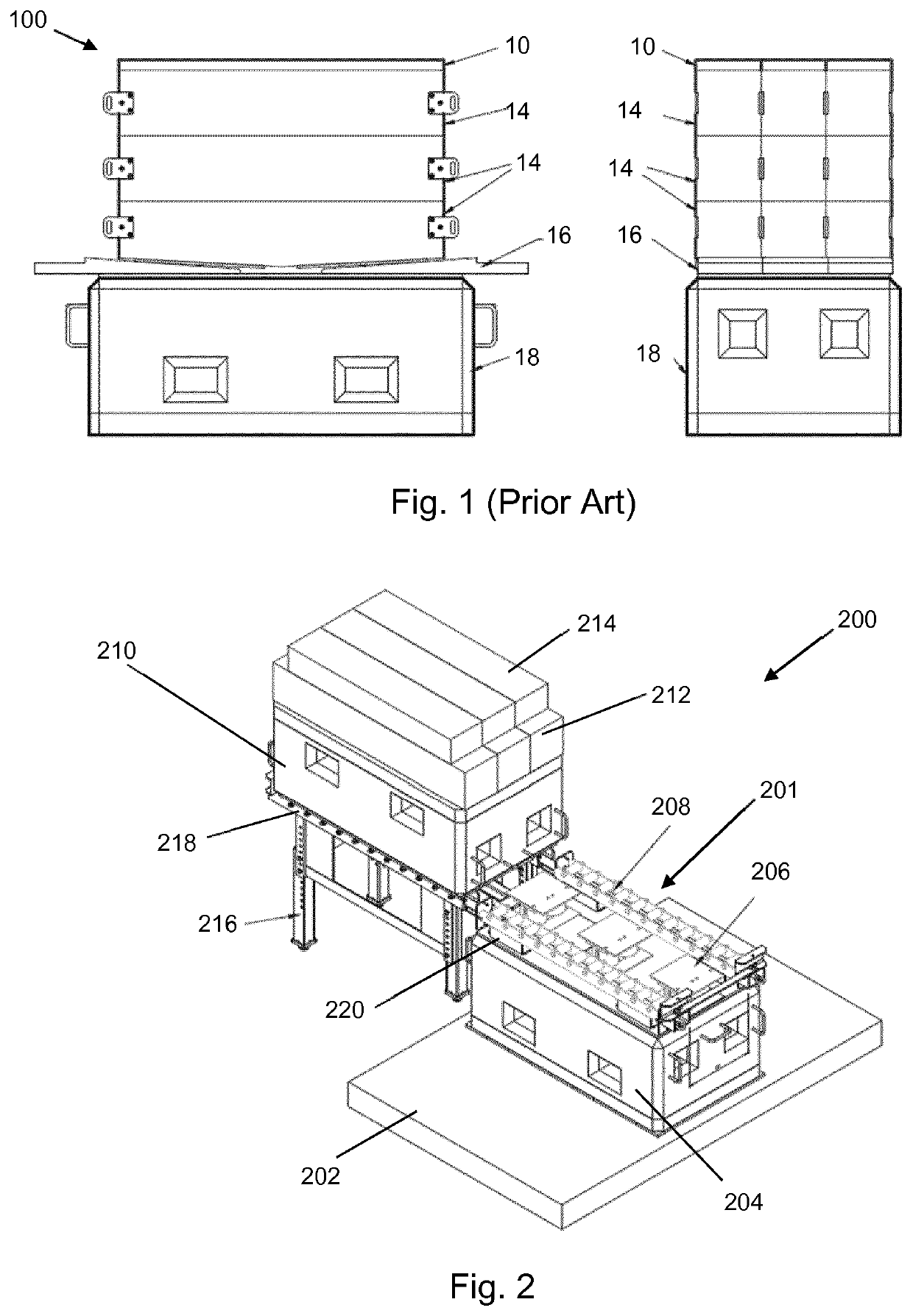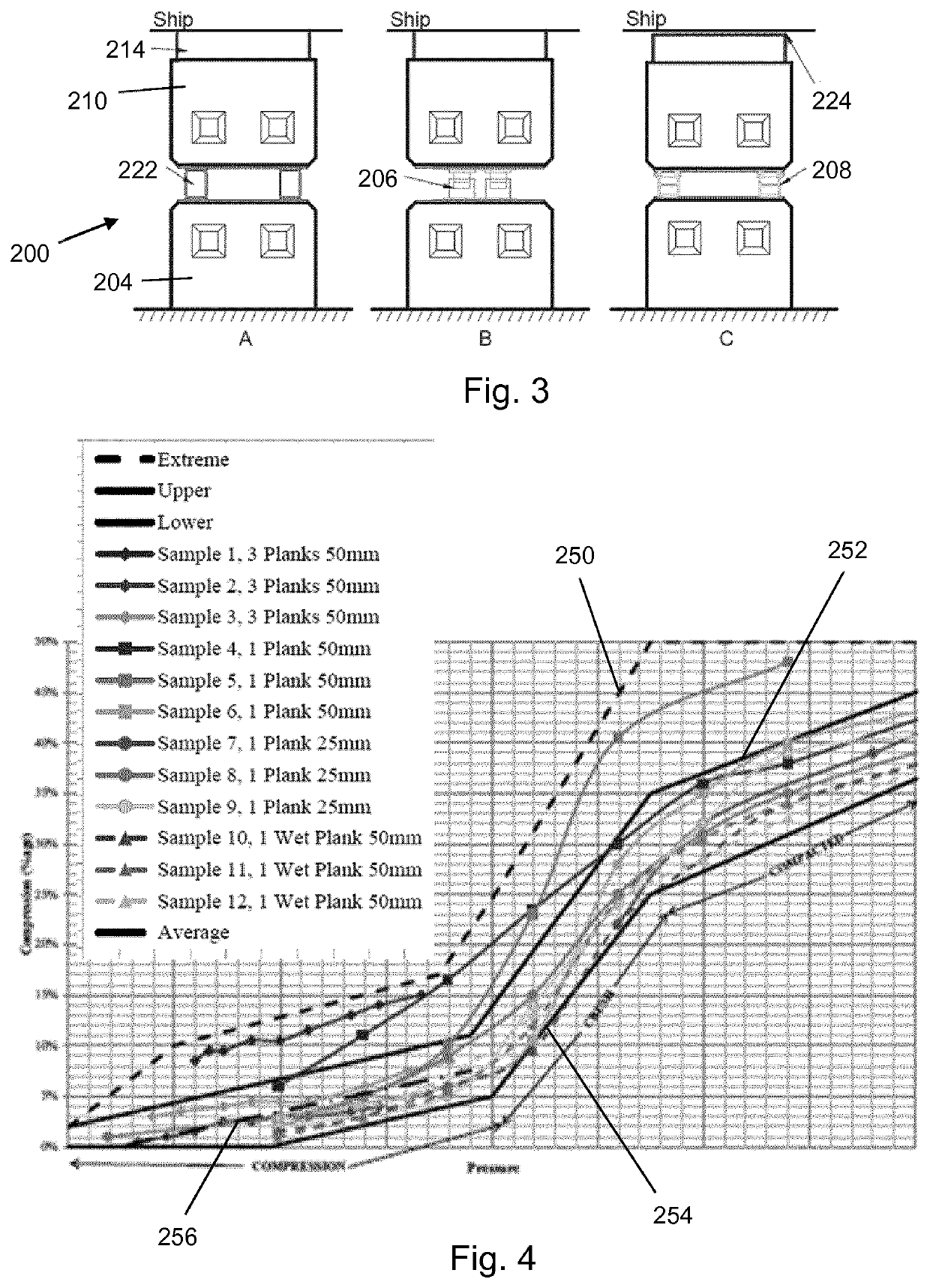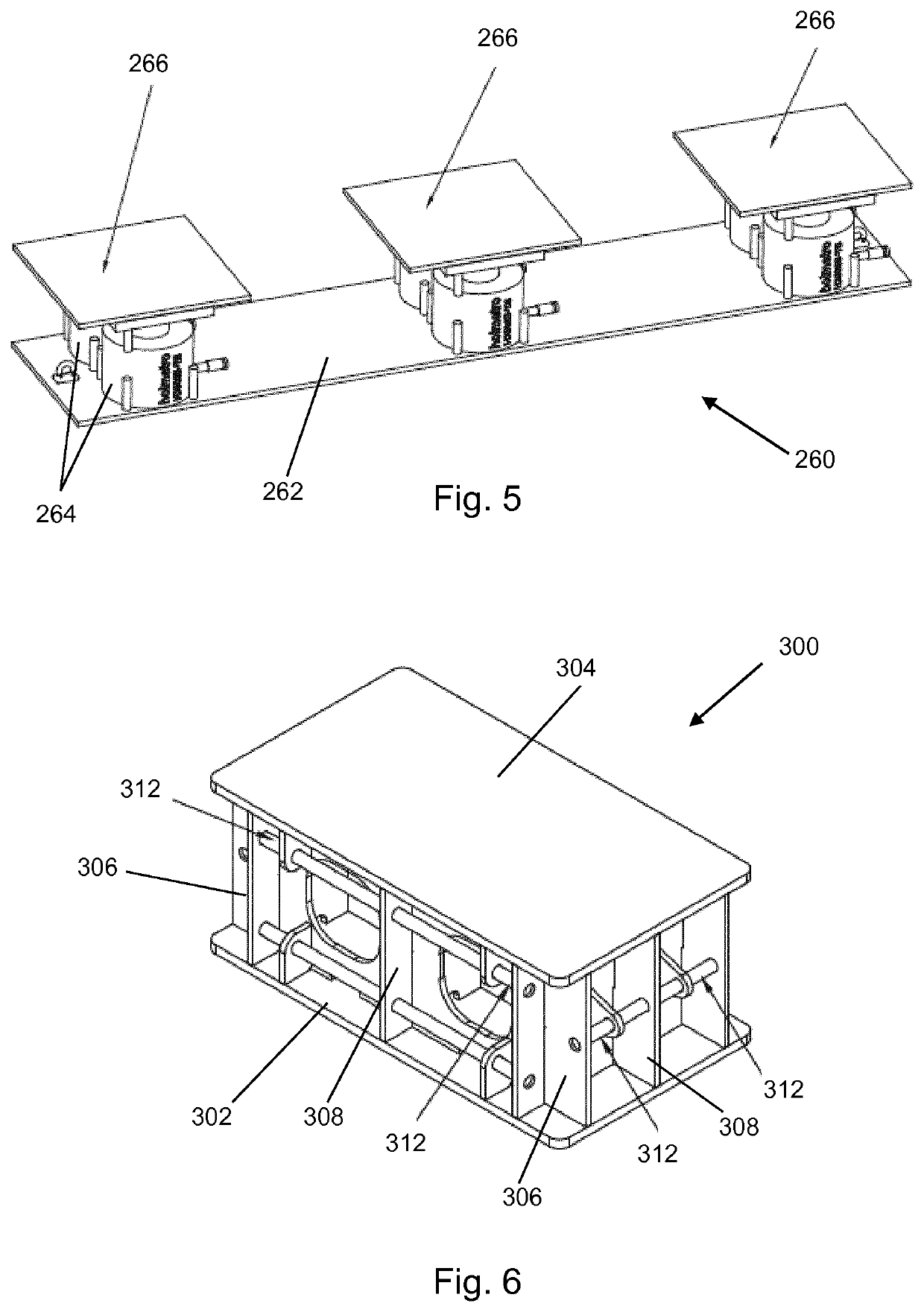Vessel supporting apparatus
a technology for supporting devices and vessels, applied in waterborne vessels, dry-docking, slipways, etc., can solve the problems of preventing access to survey and painting, difficulty in removing wedges, uneven surfaces, etc., and achieve the effect of increasing load capacity, reducing surface roughness, and reducing surface roughness
- Summary
- Abstract
- Description
- Claims
- Application Information
AI Technical Summary
Benefits of technology
Problems solved by technology
Method used
Image
Examples
Embodiment Construction
; FURTHER OPTIONS AND PREFERENCES
[0040]FIG. 2 is a perspective view of a dry dock support structure 200 that is an embodiment of the invention.
[0041]The support structure 200 comprises a stacked set of components that includes an intermediate operating layer 201 that can support both a height adjustment mechanism and a lateral movement mechanism to facilitate disengagement and removal of upper layers of the support structure 200.
[0042]The support structure comprises a base support block 204 that rests of the floor 202 or main platform of the dry dock in a conventional manner. As discussed below, the base support block 204 may be a Type 1 support block as described above, or it may be a specifically designed unit. The invention is thus capable of implementation with known elements of dock furniture.
[0043]The intermediate operating layer 201 is provided on the base support block. The intermediate operating layer may have three components: a removable rigid spacer (not shown in FIG. 2)...
PUM
 Login to View More
Login to View More Abstract
Description
Claims
Application Information
 Login to View More
Login to View More - R&D
- Intellectual Property
- Life Sciences
- Materials
- Tech Scout
- Unparalleled Data Quality
- Higher Quality Content
- 60% Fewer Hallucinations
Browse by: Latest US Patents, China's latest patents, Technical Efficacy Thesaurus, Application Domain, Technology Topic, Popular Technical Reports.
© 2025 PatSnap. All rights reserved.Legal|Privacy policy|Modern Slavery Act Transparency Statement|Sitemap|About US| Contact US: help@patsnap.com



